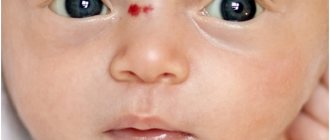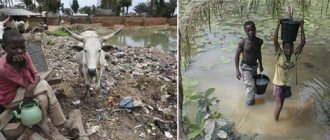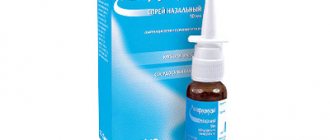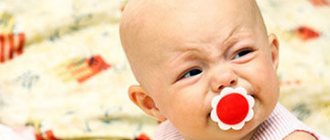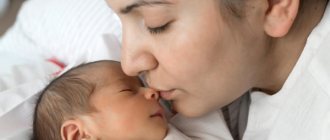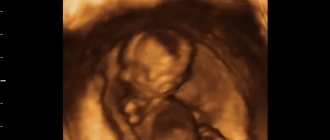Signs and degrees of burns from boiling water
Burns in children from boiling water occur more often between the first days of life and 3 years. With thermal injuries, the skin suffers from high temperatures. In children, the integument is more delicate and thinner than in adults. A brief exposure to hot water will not cause injury in an adult, but a one-year-old baby faces serious injury. The face, hands, feet have many nerve endings and are considered unfavorable areas of damage. Skin burns are divided into 4 degrees according to severity, which are characterized by the following symptoms:
- First degree. The skin exhibits hyperemia, swelling, severe itching and a burning sensation. Responsible parents heal the damage themselves within a week.
- Second degree. The epidermis of the skin dies, blisters with clear liquid appear. After some time, the number of bubbles increases (photos can be seen on the Internet). Blisters burst and fall off, increasing the risk of wound infection. The deeper layers of the skin regenerate slowly, treatment will take about three weeks. Be sure to consult with specialists.
- Third degree. There is a wound on the skin covered with a thick crust. There may be blisters filled with blood. It takes several months to heal, leaving scars. Such injuries can only be treated in a hospital setting.
- Fourth degree. The underlying structures are damaged: subcutaneous fat, muscle tissue, tendons, bones. Affected areas of the body become charred. Such damage does not occur in boiling water burns.
Types of burns
A 1st degree burn with boiling water in a child is characterized by severe redness, slight swelling and increased temperature in the area. Burns of this type should also not be tightly bandaged, nor should oil-based ointments or sprays be rubbed into them. Such burns can be easily treated at home.
A 2nd degree burn from boiling water in a child can be easily recognized by its characteristic appearance. Damage to the skin causes redness and swelling. As the burn “grows”, if no impact is applied to the damaged area, the epidermal tissue begins to become blistered. This condition is quite painful and long-lasting. The blisters fill with fluid and often burst, resulting in severe burning and aching pain. The epidermis does not have the ability to quickly regenerate after a burn, therefore, after blisters break out, open wounds are formed that heal within 1-2 weeks. 2nd degree burns do not destroy the germ layer of the skin, so they are characterized as superficial injuries. Timely treatment for 2nd degree burns gives good results without subsequent scarring.
Second degree burns can be treated effectively at home. If the affected areas are on the upper limbs, it is not recommended that water enter these areas. When washing your hands, you should blot the affected areas using napkins made from natural fabrics.
In children, such a burn can cause severe shock. This is due to sudden and prolonged pain that limits mobility. The injured child needs to be reassured by an adult without giving in to panic himself.
A 3rd degree burn from boiling water in a child is fraught with serious consequences, deeply damaging the skin, reaching the nerve endings and blood vessels. Only an experienced doctor can handle such a burn. Therefore, parents should immediately call an ambulance. Burns of this type can occur if the baby’s body is exposed to boiling water for a long time. For example, a child found himself in a huge container of boiling water (such cases are surprisingly not uncommon - especially in the summer, when it is time for preservation at home). Sometimes parents draw a bath for the baby, fill it with boiling water, wait for a while until the water temperature drops to an acceptable level, and then, without checking for themselves, lower the child into the still very hot water. The baby's delicate skin instantly reacts to the high temperature of the water with redness and the appearance of blisters.

Principles of first aid
When a child suffers, his parents are ready to do everything to improve his condition. A burn from boiling water is a big stress. First aid for a small child should be provided quickly and effectively. Every minute counts. Children's skin conducts heat well. The burn spreads to the deeper layers, increasing the area and severity of the lesion. First aid for a child who is burned by boiling water is:
- Remove the causative factor that affects the child’s body.
- Remove clothing. You need to undress the child carefully so as not to cause suffering to the baby. It's better to take scissors and cut the outfit. When the synthetic material stays on the body, there is no need to tear it off. Cool the wound with cool water; the procedure reduces local temperature, burning sensation and itching. Do not use ice or ointments based on fat or oil. Such products create a protective film, the pathological process will spread to the underlying layers, and infection will occur.
- Apply a sterile bandage (bandage, gauze) to the burn site.
- Remove pain and itching with a soda solution (1 teaspoon per glass of water).
- Cool the dressing with water from time to time.
- Apply medications (panthenol, Levin) to the burn surface.
- Use antihistamines (tavegil, suprastin, diphenhydramine) and analgesics (panadol, analgin) according to the age-specific dosage.
Absolutely forbidden:
- open the bubbles yourself;
- apply fat-based creams and ointments to damaged areas;
- lubricate the burn with iodine, alcohol or potassium permanganate;
- apply a patch;
- Apply the bandage tightly to the affected surface.
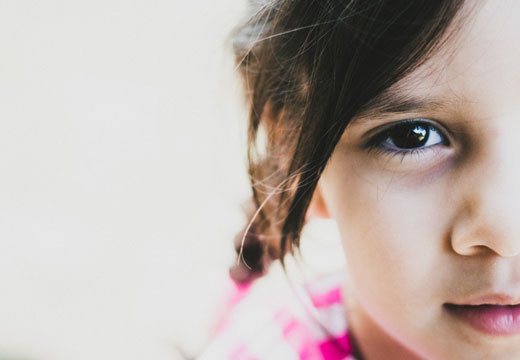
The medicine cabinet does not always contain the necessary medications. Folk remedies will help:
- Grate fresh potatoes and apply to the burn. Apply a sterile bandage on top.
- Place the cabbage leaf on the damaged surface.
- Aloe leaf has wound healing properties. Apply to the burned area several times a day.
- Regular tea will come to the rescue. The tea leaves are poured over the bandage.
- Sage, oak bark, and yarrow are used for compresses.
- Propolis ointment has wound-healing and bactericidal properties.
The products relieve heat, swelling, and hyperemia on the damaged surface. They are allowed to be used only for mild lesions or at the healing stage.
About the effects of hot water
A boiling water burn is a type of thermal injury. With them, both the surface layer of the skin and the inner layers suffer. Basically, such an injury does not occupy a significant area on the child’s body.
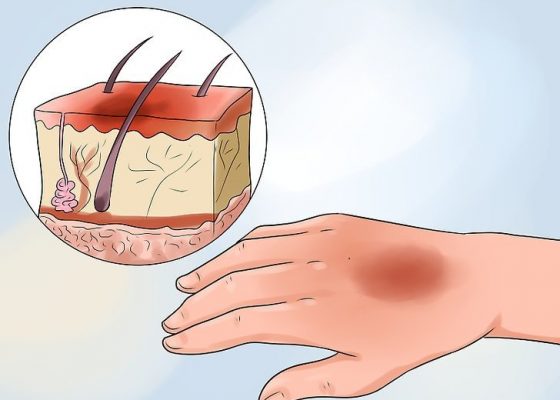
However, it is worth considering how much boiling water was poured onto the baby. Minor skin injuries from hot water are classified as 1st degree, while deeper burns are classified as 2nd-3rd degree.
- The first degree is expressed by damage to the surface of the epidermis. The skin becomes red and swollen in the area of the burn. When palpated, the child feels pain.
- The second degree involves violation of the integrity of the surface layer and a small part of the skin underneath. The consequence of this is blisters on the surface of the dermis, containing a cloudy liquid inside.
- Third degree - the presence of a wound on the skin deep to the subcutaneous fatty tissue. A scar remains on the child’s body at the site of the burn.
- There is also a 4th stage , in which the entire skin becomes dead and the bones and muscles become charred. But if you receive a burn from boiling water, this stage cannot occur.
Regardless of the type of burn the child received, parents are obliged to provide him with first aid without harm to health. Only after this can you begin the treatment itself.
Further treatment
Minor burns can be treated at home. Use ointments with a healing effect (panthenol). Dressings are constantly done with a sterile bandage or gauze. For second-degree burns, ointments with a bactericidal component (dermazin, levomekol) are used. Apply a dry bandage to the burn site. The third degree can only be treated by a doctor in a hospital setting. Antibiotic therapy (amoxicillin, ceftriaxone), infusion therapy, and treatment of the burn surface with miramistin, chlorhexidine, and furatsilin are prescribed. In the conditions of the department, physiotherapy is used that improves blood circulation and increases the regenerative ability of tissues. Contractubex, Actovegin are drugs that prevent the formation of scar deformities on the skin. The fourth degree requires antimicrobial and surgical treatment.
What to do first
If a child is burned by boiling water, first aid is provided immediately.

Stages of first aid for burns:
- Initially, parents need to undress the child. This will prevent clothing from coming into contact with the skin layer.
- Next, you need to assess the degree of the burn and its area. This point is very important, since further tactics will depend on it.
- If you receive a 1-2 degree burn without extensive injuries, you do not need to call a doctor at home. But, if large blisters have formed on the skin in a short time, inside of which bloody fluid is visible, calling a doctor is considered mandatory.
- It is easy to determine the area of the burn yourself. Doctors set it as follows: each arm or leg and back - 9% of the body area, head and both shoulders - 21%, and pelvis - 18%. If a child only burns his hand, it will take about 2.5%, and his hand and stomach will take about 11.5%. In case of thermal injury with damage to 15% of the body area, as well as a 3rd degree injury with damage to 5-7% of the area, the child will need the help of experienced specialists.
- After a visual assessment, adults can call an ambulance. But if the lesion is small, it is permissible to use therapeutic measures at home. One way or another, first aid for a burn should be refused by parents correctly.
- It is prohibited to treat a boiling water burn with sour cream, butter, baby skin cream, or anything greasy. This will lead to disruption of heat transfer, thereby slowing down the healing of the wound. During this process, the child will feel pain in the injured area.
- First you need to cool the injured area of skin. Cold tap water is suitable for this. After turning it on, you need to place the affected part of the body under the tap for 10-15 minutes.
- Afterwards, a sheet or diaper soaked in cool water is applied to the burned part of the body. It is prohibited to use ice to cool the burn site.
Possible complications and healing
A life-threatening condition is burn shock – the body’s protective reaction to unfavorable environmental factors. There are three degrees of shock:
- The first degree is observed when 20% of the body is affected. The patient complains of nausea, thirst, chills. He develops pale skin and tachycardia.
- In the second degree, 20%-60% of the skin is affected. The symptoms only get worse. The patient has impaired renal function (oliguria, blood in the urine).
- Third. Burn surface – 60% or more. The patient is in a coma, the work of all internal organs is disrupted. May be fatal.
Less dangerous consequences of a burn with boiling water: scars, abscesses, phlegmon, septic reactions, impaired motor functions. They can be avoided if you follow doctors' recommendations.
Burns of any degree from boiling water are dangerous for a child. It is necessary to exclude self-medication and seek help from a doctor. With correctly provided first aid and competent therapy, even scars will not remind you of the incident.
The article has been verified by the editors
Scars and other possible consequences
A first-degree boiling water burn in children, as a rule, heals without a trace, or a small area of skin remains, which differs in color from the surrounding undamaged areas. Severe burns from boiling water lead to the formation of serious consequences in the form of rough keloid scars. With age, they begin to tighten the surrounding tissue. If joints are located nearby, their contracture develops, and the range of movement in them is sharply limited. Burns on the face can lead to tightening of the eyes and lips, and the face becomes disfigured. Correction may require more than one plastic surgery.

